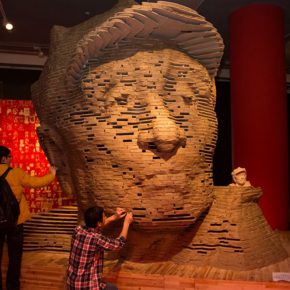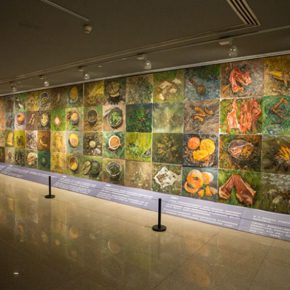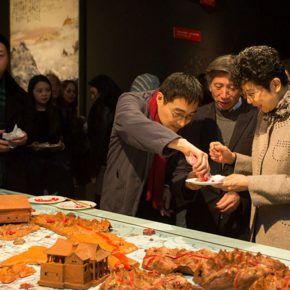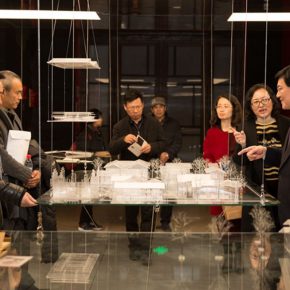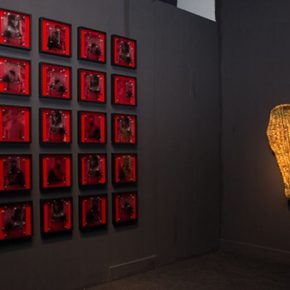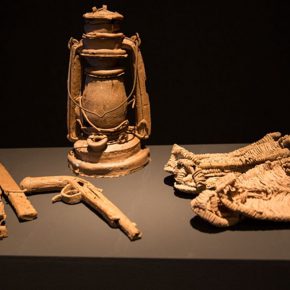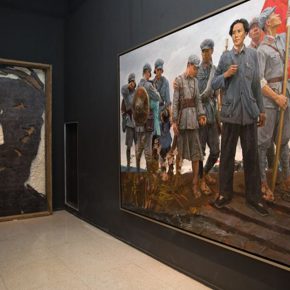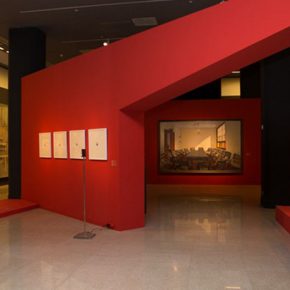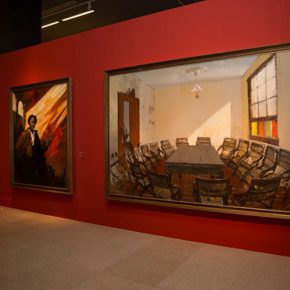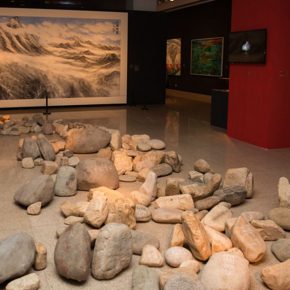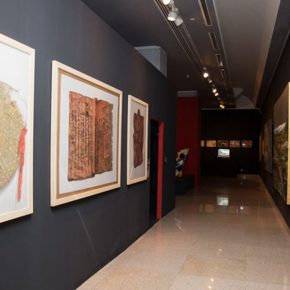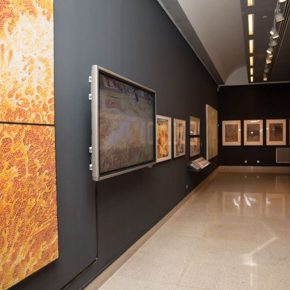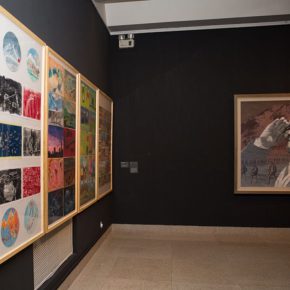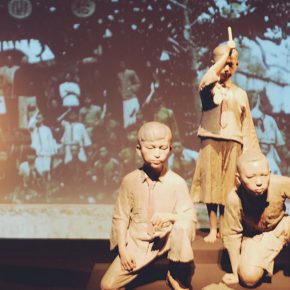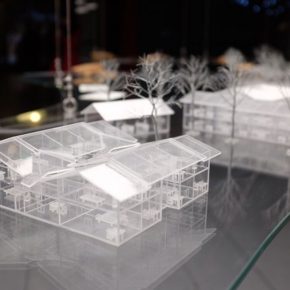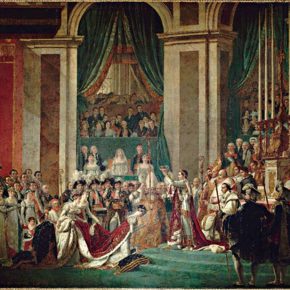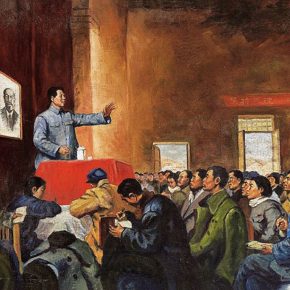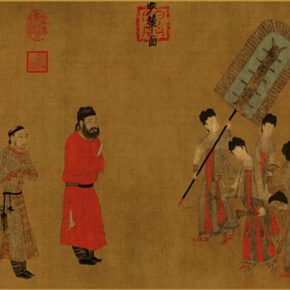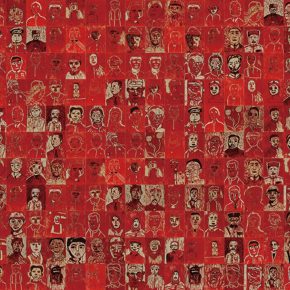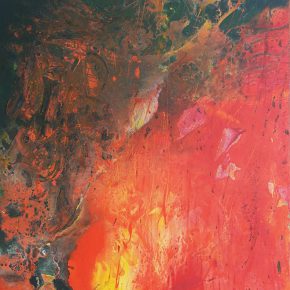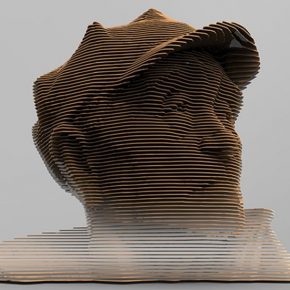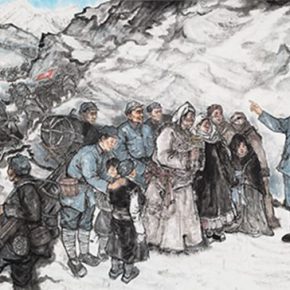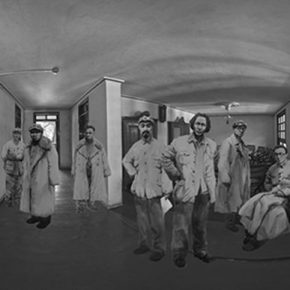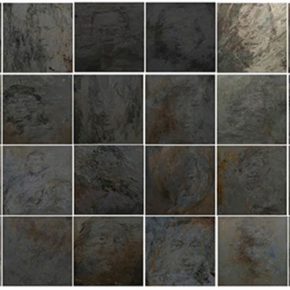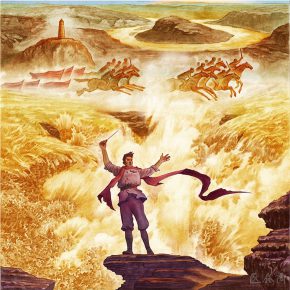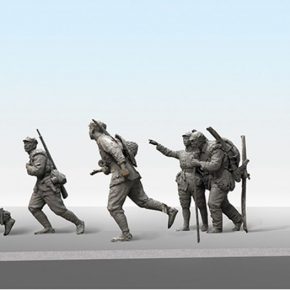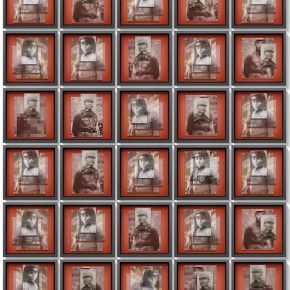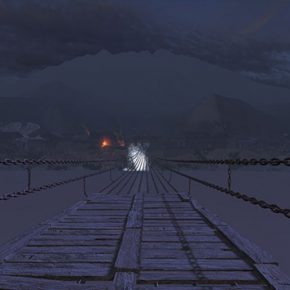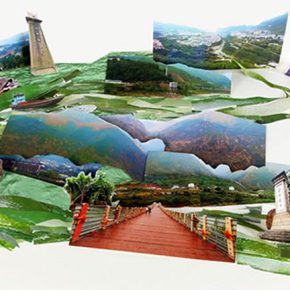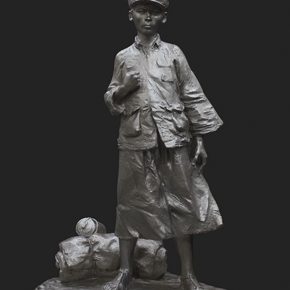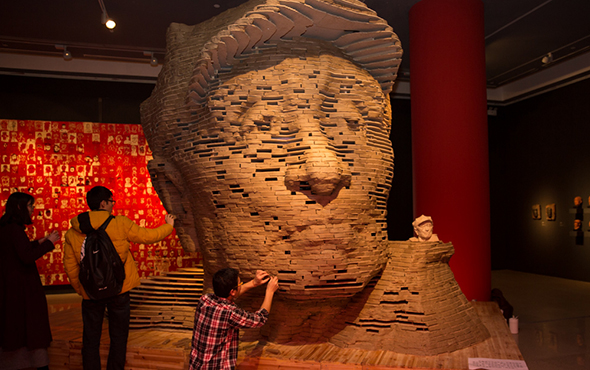
On December 23, 2016, initiated by the Central Academy of Fine Arts (abbr.CAFA), to commemorate the 80th anniversary of the victory of the Chinese Workers’ and Peasants’ Red Army, an exhibition that had been in preparation for more than a year, “Long March of Art” was unveiled at the National Art Museum of China, many honored guests gathered at the opening ceremony, and many visitors queued at the entrance to the museum, from this information, we find that it is a sensational art exhibition. On the one hand, this is a sign depicting the influence of the whole CAFA with this turn out, and on the other hand, the “Long March of the Red Army of Chinese Workers and Peasants” has a strong cultural and historical meaning. Interpreting it from a literal point of view, this exhibition is closely related to the words of “Thematic creation”, “Major theme”, “Work of a proposition”, but it seems that they are far from the audience’s enthusiasm in the context of contemporary art. At the beginning of the founding of the People's Republic of China, the Central Academy of Fine Arts was the mainforce in the creation of revolutionary historical themes, does CAFA have a new modal adjustment in this art field in the 21st century?
Thematic creation is not an unfamiliar concept in art history. In the Renaissance, under the support of other disciplines, the painting was gradually able to express religious myths, literary stories and historical events, while the humanistic process of painting was the deep logic behind it. The artists were able to use the forms and language of painting to unify and combine the characters, plot and the interpretation logic behind it just as the humanities do, to form a perfect visual narrative structure. It can be seen that the creation of major themes is also a manifestation of the promotion of artistic discourse rights. The neoclassical painting that emerged during the French Revolution was highly integrated with the national will and propaganda needs in terms of the selection of subject matter, expression, and interpretation. For example, a series of creative works by Jacques-Louis David express the great ancient and modern themes, it emphasizes rationality rather than sensibility in artistic form, becoming the model of major thematic creations of Western art.
In China, because the main body of artistic creation and writing of art history is constituted by the literati, traditionally Chinese traditional art is the literati art, which is places emphasis more on the self. However, the long-term existence of imperial power and imperial art also caused the practical needs of major thematic creations. A variety of “Patrol Figures” are the realistic or imagined portrayals of the patrols of emperors by painters at that time, to promote political dignity, which is out of the requirement of the ruling class. The traditional painting emphasizes “The painting aims at teaching people, helping people to interpret the problem…”, while this kind of major thematic creation also plays a positive role in the construction of morals and society.
However, along with the transformation from the traditional art to the modern art form, the major thematic creation gradually declined after Western Impressionist art appeared, and China ushered in a new development along with the road to modernity. After the founding of new China, due to the requirement of traditional revolutionary education and socialist revolutionary construction, the Chinese art circles created a large number of revolutionary historical paintings, the Central Academy of Fine Arts was the most important creative force at that time, and it created a large number of familiar “red classics”. Compared with the portrayal of traditional themes, such major thematic creations use this approach to realism to depict heroes, creating a high or tragic mood for the screen, and more importantly, it became a collective will of the state, particularly emphasizing the presentation of the national intention of the work.
After the reform and opening up, with the changes of the overall social and cultural context, art is more inclined to advocate the self, self-expression of the contemporary individual, so the personal will was expanded, and it didn’t synchronize with the collective will, and more and more big gaps even emerge, which is an inherent requirement for the art developed in the contemporary mode. The awakening and expansion of individual consciousness has an inevitable contradiction with the creation of traditional thematic creations which reveal the deep social psychology of the audience who made a selection.
At present, the collective aesthetics is desalted, what is the major theme of the creation? It is an academic issue that should be thought through by the Central Academy of Fine Arts when it organized the project of the “Long March of Art”. The project is not a top-down implementation, and it does not demand concentration on the main points, but around the “Long March” it explores a multi-disciplinary and trans-disciplinary platform, while training the students to have the spirit of “Long March” on the road of art. “Long March of Art” adheres to going to the countryside to investigate and sketch, which is an excellent teaching tradition of CAFA, various faculties were sent to different places along with the Long March, visiting the places of the Long March, visiting the witnesses, experiencing life, drawing landscapes, to express the personal sentiment in the form of creation. The project also brings out the single mode of sketching and creation, and is closely integrated with disciplinary teaching and topical research.
The exhibition is exhibited on the 3rd and 5th floors of the National Art Museum of China, the displayed works break through conventional forms such as oil painting, Chinese painting and sculpture, incorporating more works in different media such as images, animation, picture books, installations, VR technology, and the surveying and mapping of buildings. The application of VR technology also greatly enhances the enthusiasm of the audience to participate in and experience it, while the virtual historical space and real art space are interspersed in parallel with the exhibition hall.
It is a major thematic exhibition that breaks through the traditional theme, and perhaps it is more appropriate to position it as a contemporary art exhibition with traditional themes. CAFA has a tradition and advantage in the major thematic creations and it is an actual need for the interaction between art and society, the entire art world thinks and explores the topic of tradition that transits to contemporary, while the contemporary transformation of the traditional creative model of major thematic creation is a significant topic. CAFA holds the event to explore a new creative organization mechanism, through team work, collective research and creation to reflect on the new image of the major thematic creation in the new era, perhaps it provides a feasible and exemplary path for the establishment of artistic creative identity and exploration in a variety of diverse environments.
A while ago, the film “Mekong Action” which is a real-life adaptation was on-line, and its theme decides it is a main thematic film reflecting the national will. It has both success in the box-office and evaluation, which reveals that films of a thematic creation is still promising in the present market based on young people and it also shows that the domestic art audience does not exclude the major thematic creations but repeals the sick and modeled indoctrination of the will. “Long March of Art” is like a model of organization, research and exhibition that will provide a new possibility under the contemporary art context in the pursuit of diverse contemporary art.
Text by Zhang Wenzhi, translated by Chen Peihua and edited by Sue/CAFA ART INFO
Photo by Yang Yanyuan, Hu Sichen, Lin Jiabin/CAFA ART INFO
(Part of the photos of works courtesy of the organizer)


